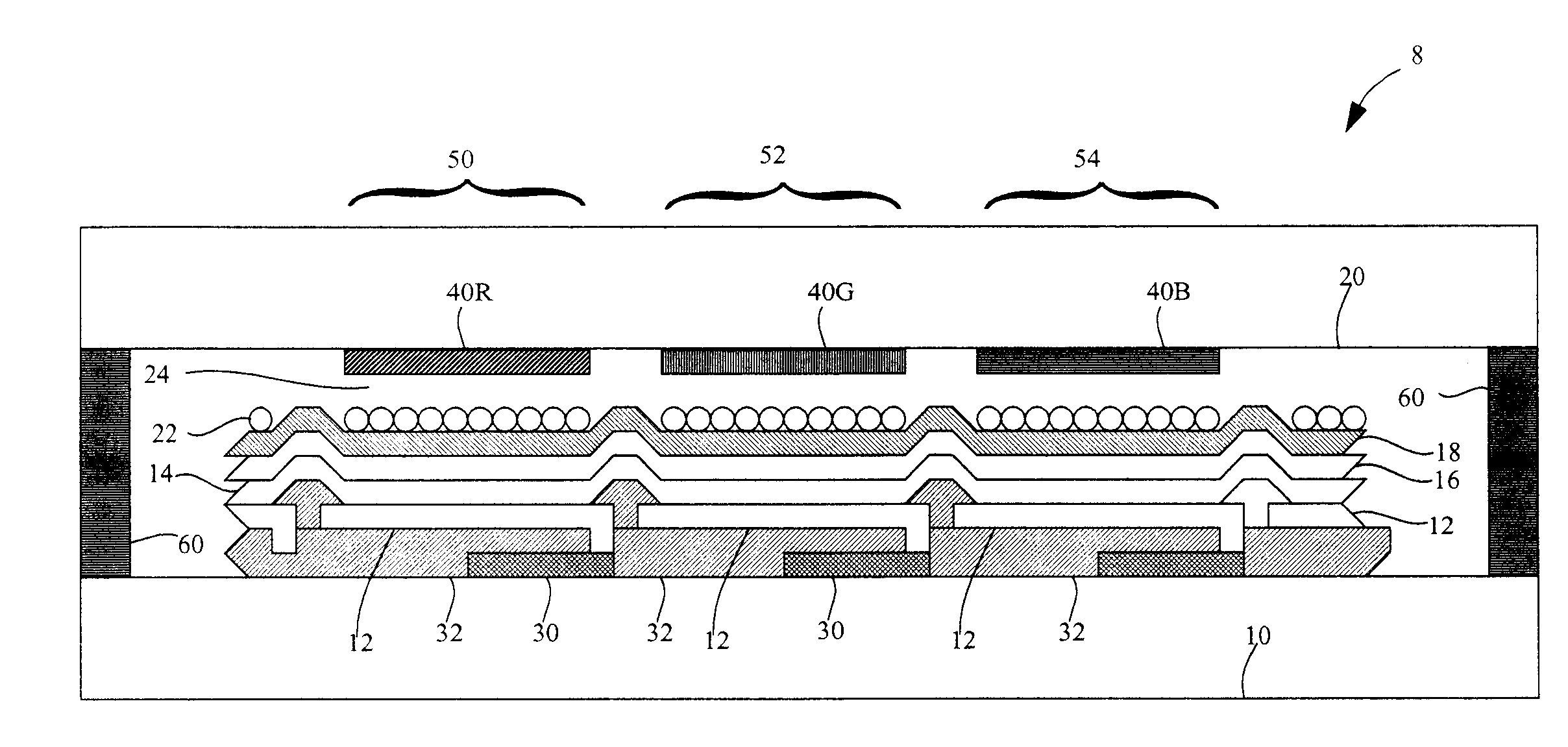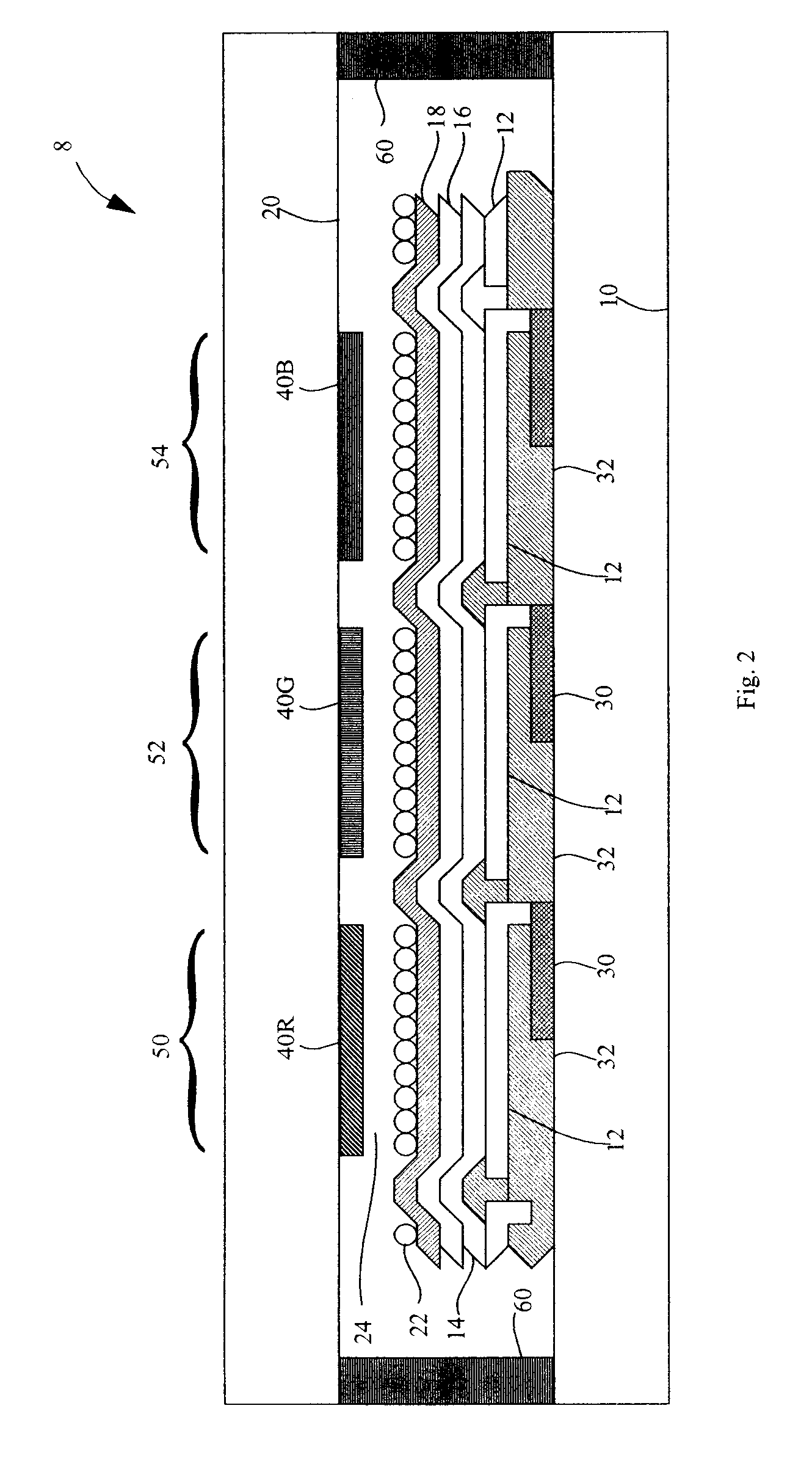Process for forming OLED conductive protective layer
a technology of conductive protective layer and oled, which is applied in the direction of discharge tube luminescnet screen, discharge tube/lamp details, coating, etc., can solve the problems of reducing display quality, oled devices are prone to shorting defects, and sensitive materials containing organic el elements, etc., to achieve the effect of improving yield, reducing damage, and increasing lifetim
- Summary
- Abstract
- Description
- Claims
- Application Information
AI Technical Summary
Benefits of technology
Problems solved by technology
Method used
Image
Examples
Embodiment Construction
[0034]Referring to FIG. 1, a process for forming an OLED device, comprises the steps of providing 100 a substrate having a first electrode and one or more organic layers formed thereon, at least one organic layer being a light-emitting layer, forming 105 a conductive protective layer over the one or more organic layers opposite the first electrode by employing a vapor deposition process comprising alternately providing a first reactive gaseous material and a second reactive gaseous material, wherein the first reactive gaseous material is capable of reacting with the organic layers treated with the second reactive gaseous material, wherein the temperature of the gaseous materials and organic layers are less than 140 degrees C. while the gases are reacting and wherein the resistivity of the conductive protective layer is greater than 106 ohm per square; and forming 110 a second electrode over the conductive protective layer by sputter deposition. Because of the relatively high resista...
PUM
| Property | Measurement | Unit |
|---|---|---|
| internal pressure | aaaaa | aaaaa |
| thick | aaaaa | aaaaa |
| thickness | aaaaa | aaaaa |
Abstract
Description
Claims
Application Information
 Login to View More
Login to View More - Generate Ideas
- Intellectual Property
- Life Sciences
- Materials
- Tech Scout
- Unparalleled Data Quality
- Higher Quality Content
- 60% Fewer Hallucinations
Browse by: Latest US Patents, China's latest patents, Technical Efficacy Thesaurus, Application Domain, Technology Topic, Popular Technical Reports.
© 2025 PatSnap. All rights reserved.Legal|Privacy policy|Modern Slavery Act Transparency Statement|Sitemap|About US| Contact US: help@patsnap.com



